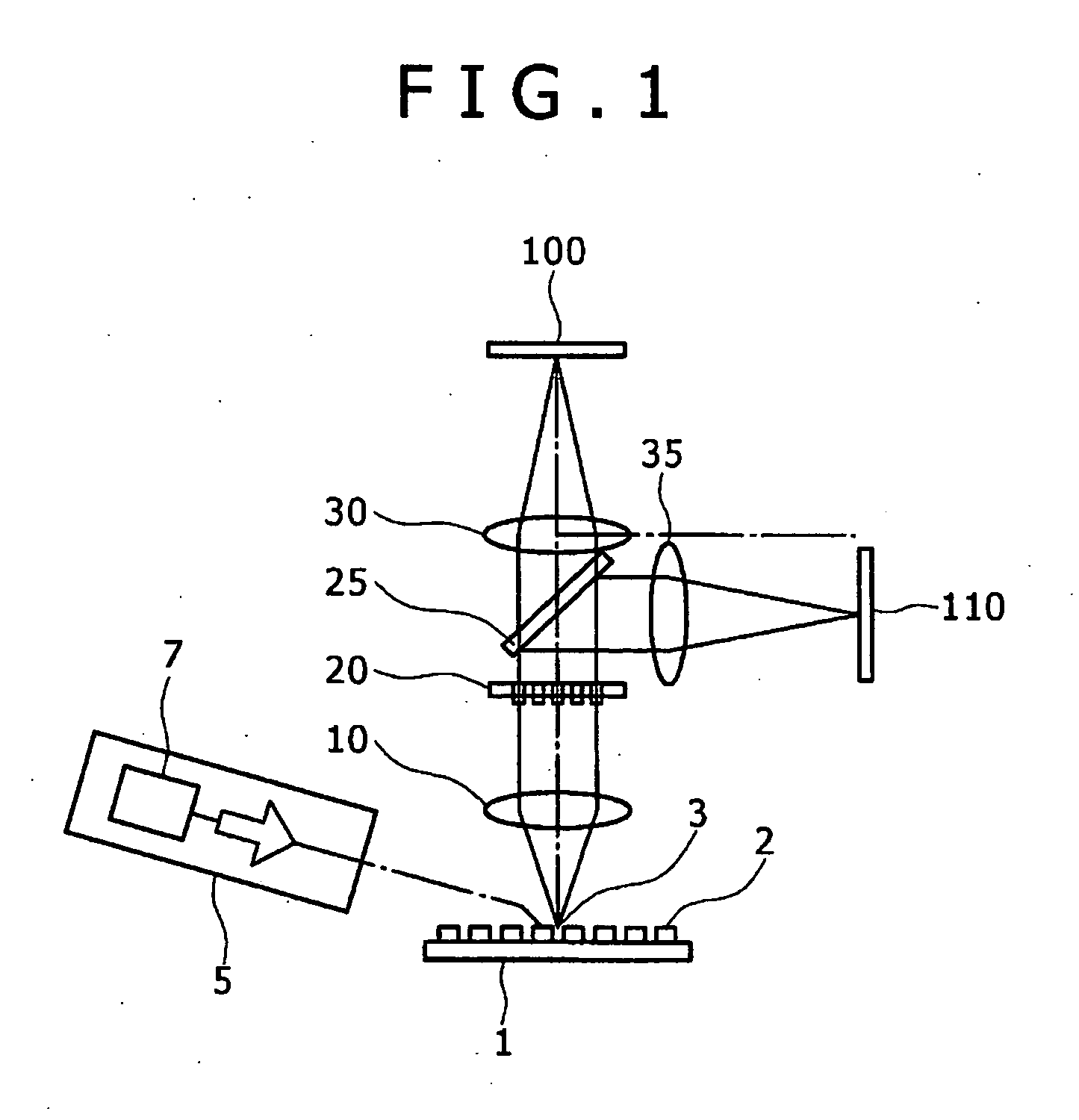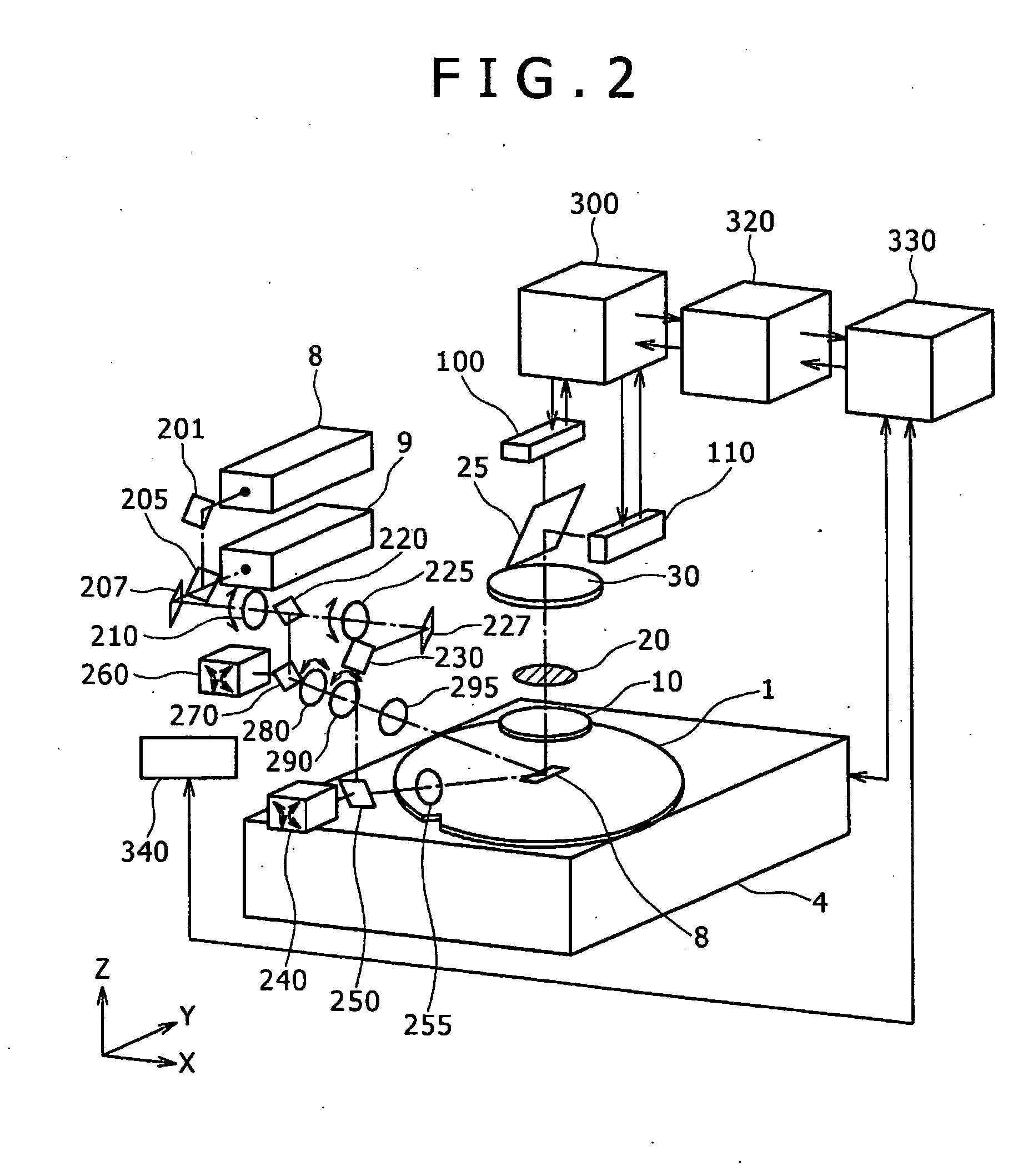Method and apparatus for inspecting defects
a technology of defect inspection and inspection method, applied in the direction of photomechanical apparatus, material analysis by optical means, instruments, etc., can solve the problems of scattered light, extremely small scattering light, and hardly obtained scattering light from defects, so as to suppress the lowering of the aperture ratio of the detection optical system, improve the capture ratio of defects, and improve the effect of inspection sensitivity
- Summary
- Abstract
- Description
- Claims
- Application Information
AI Technical Summary
Benefits of technology
Problems solved by technology
Method used
Image
Examples
first embodiment
[0053]FIG. 1 shows a configuration of an apparatus for detecting defects of a specimen according to the present invention. A pattern 2 is formed on a wafer 1 and a defect 3 exists on the pattern 2. The wafer 1 is illuminated by an illumination optical system 5 of a plurality of wavelengths (in this embodiment, two wavelengths λ1, λ2) that is disposed slantingly relative to the wafer 1. For a light source 7 used in an illumination optical system 5, lights ranging from DUV (Deep Ultraviolet) lights to the visible lights such as: mercury lamps emitting the d line (588 nm), the e line (546 nm), the g line (436 nm), the h line (405 nm), and the i line (365 nm); a second harmonic 532 nm laser of YAG; a third harmonic (355 nm) or fourth harmonic (266 nm) laser; and a 199 nm laser. Among them, lights of two wavelengths (λ1, λ2) are cast on the wafer 1 for illumination from the illumination optical system. Among pieces of light scattered by the pattern 2 and the defect 3, light that propagat...
second embodiment
[0058]FIG. 4A shows an example in which a liquid crystal filter 500a is used as a spatial filtering device. Only the linearly polarized light corresponding to a transmission axis of a liquid crystal filter incident light 150 is transmitted through a first polarizing plate 155. In a TFT (Thin Film Transistor) substrate 160, an impressed voltage of an illumination electrode 180 is controlled to change alignment of a liquid crystal 170 that is sealed in between two orienting films 165, 175. This configuration makes it possible to control the transmittance of the filter transmitted light that is transmitted through a second polarizing plate 185 according to the alignment of this liquid crystal 170. This liquid crystal filter 500a is such that pixels are arranged in the form of a two-dimensional array, and the transmittance of the light can be controlled for every pixel 505.
[0059]FIG. 4B shows a structure of a two-dimensional spatial filter 500b that utilizes the electro-optic effect. Re...
third embodiment
[0061]With the two-dimensional spatial filter shown in FIG. 3D and FIG. 4, the pixel 510 to be shielded is shielded for the lights of two wavelengths λ1, λ2. However, since positions of the diffracted lights of wavelengths λ1, λ2 do not coincide with each other, the pixel on which the diffracted image of a wavelength λ1 is formed shields only the λ1 light, and the pixel on which the diffracted image of a wavelength λ2 is formed shields only the λ2 light; therefore, a substantial aperture becomes larger.
[0062]FIG. 5 shows an example in which a two-dimensional array liquid crystal tunable filter 500d that is formed by arranging liquid crystal tunable filters LCTF's (Liquid Crystal Tunable Filter) using a principle of the Lyot filter in the form of a two-dimensional array is used as the spatial filter. When the lights of wavelengths λ1, λ2 come incident on a first polarizing plate 550, the two lights become the linearly polarized lights, enter the wave plate 555, and are given a phase ...
PUM
| Property | Measurement | Unit |
|---|---|---|
| wavelength λ1 | aaaaa | aaaaa |
| wavelength | aaaaa | aaaaa |
| rotation angle | aaaaa | aaaaa |
Abstract
Description
Claims
Application Information
 Login to View More
Login to View More - R&D
- Intellectual Property
- Life Sciences
- Materials
- Tech Scout
- Unparalleled Data Quality
- Higher Quality Content
- 60% Fewer Hallucinations
Browse by: Latest US Patents, China's latest patents, Technical Efficacy Thesaurus, Application Domain, Technology Topic, Popular Technical Reports.
© 2025 PatSnap. All rights reserved.Legal|Privacy policy|Modern Slavery Act Transparency Statement|Sitemap|About US| Contact US: help@patsnap.com



